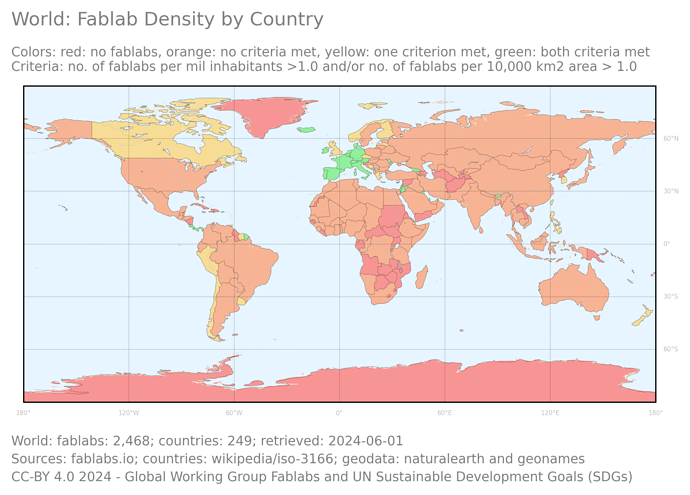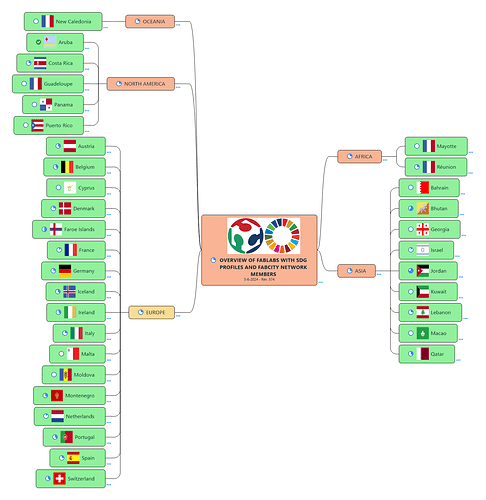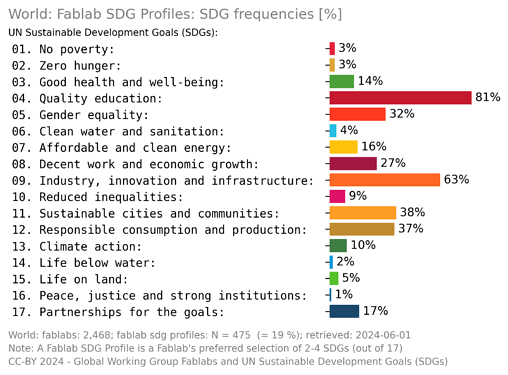In a world with 2468 registered fablabs (June 1, 2024) you would expect that there would be fablabs in every country in the world by now; perhaps more in the USA because that is where Neil Gershenfeld (MIT) developed the concept at the time. However, the world map above shows a different picture. 1)
The map shows all countries of the world; their color represents the fablab density. Green represents the highest density: a country with more than 1.0 fablabs per million inhabitants and more than 1.0 fablabs per 10,000 km2 surface area. Yellow means that a country only meets one of these criteria, Orange that the country does not meet either density criteria, but does have fablabs, Red means that the country is without any registered fablabs at all.
Of the 249 countries in the world (iso-3166), 34 have the highest fablab density (Green). Despite its 277 fablabs, the USA does not meet either density criterion (Orange). A total of 111 countries do not have a single fab lab (Red). This concerns many islands with a small population size. If we leave out the countries with less than 1 million inhabitants, there are still 44 countries without fab labs.
The figure above provides an overview of all “green” countries. The small pie chart per country indicates what percentage of fab labs have now drawn up an SDG profile (their own preferred selection of 2-4 SDGs). So far there is one country that has achieved 100%: Aruba!
The figure below shows the distribution of the SDG profiles across the 17 UN Sustainable Development Goals. This global distribution hardly changes over time, but each continent has different accents. Online you will find overviews per continent and per country.
All this data is brought to you by the Global WG Fablabs & Sustainable Development Goals (SDGs). Fablabs can register as such via https://fablabs.io; once this happens, a fablab can create an SDG profile via https://bit.ly/fab14-sdgs-fablabmanager and submit it via https://bit.ly/fab14-sdgs-form. All images can be found and searched and filtered via https://bit.ly/fablist-sdgs, which is updated monthly.
The Global Working Group “Fab Labs and UN Sustainable Development Goals (SDGs)” consists of Pieter van der Hijden (coordinator) (The Netherlands & Suriname), Enrico Bassi (Italy), Vaneza Caycho Ñuflo (Peru), Nagwa ElNwishy (Egypt), Neville Govender (South Africa), Ted Hung (Taiwan), Arundhati Jadhav (India), Beno Juarez (Peru), Yogesh Kulkarni (India), Noksy Letsoalo (South Africa), Lucía Lucas (Spain), Jean-Baptiste Natali (New Zealand), Mess Wright (USA).
- There are some minor mismatches between iso-3166 countries and the geospatial data from Natural Earth, like some disputed countries but also French Guyana that now reflects the fablab density of France.


